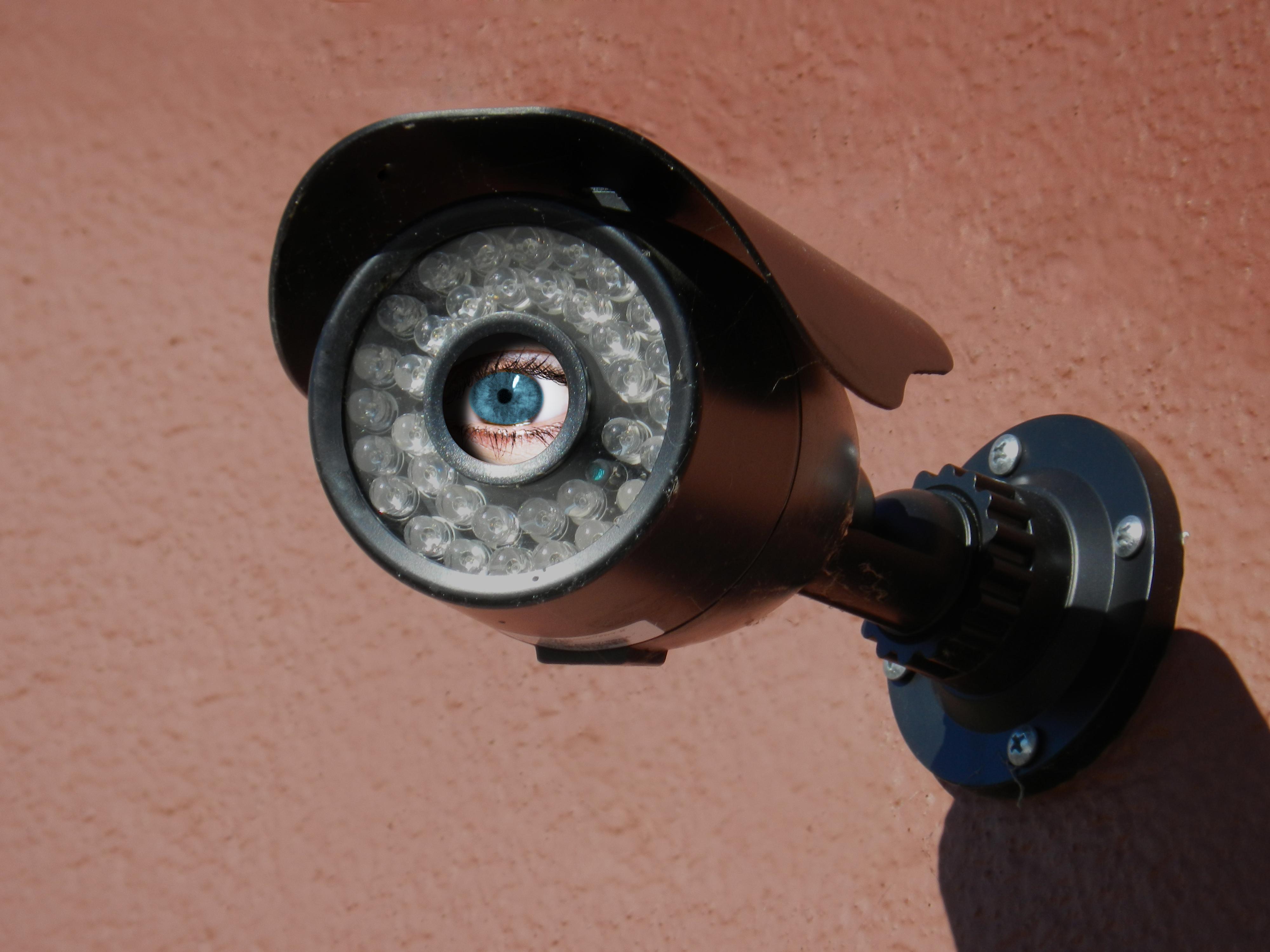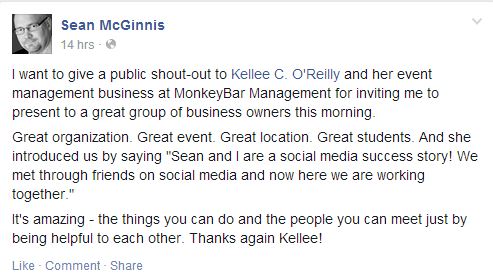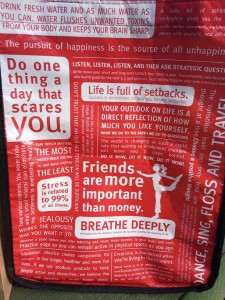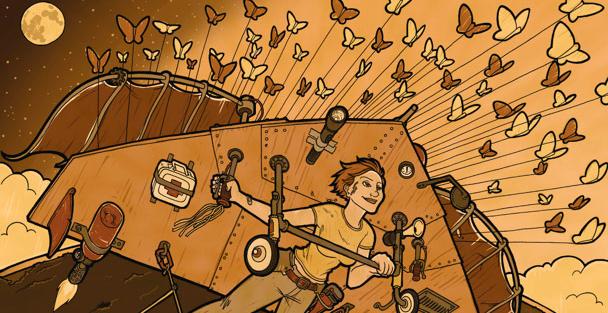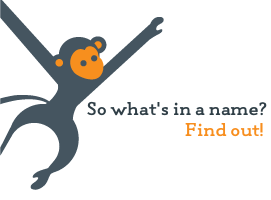Halloween is the one day a year where we can pretend to be just about anything: fierce pirates, benevolent princesses, clever ninjas.
This is a scary story about a person who wears a mask the other 364 days a year: the ‘person next door’ masquerading as a caring, trustworthy, professional who is all the while taking pleasure in manipulating and taking advantage of you.
This is the true tale of the wolf in sheep’s clothing: I was the Little Red Riding Hood who had a much-too-close encounter with a seemingly-professional, charming, smooth-talking, deceitful, remorseless sociopath.
We imagine sociopaths to be, well, mass murderers. It’s easy to think, “I’d never be taken in by someone like that.” But in fact, sociopathy is simply defined as the absence of a conscience – a condition that does not necessarily present itself violently. And you’d be shocked at how you can be taken in.
Sociopathy is a “noncorrectable disfigurement of character thought to be present in about 4% of the population.”1
(That’s one in twenty five people! The odds are that you probably know one, too.)
This is a cautionary tale, one that may save someone else’s business. Because the wolf who pulled the wool over my eyes is still out there, knitting caps for others. I was fortunate that I saw clearly enough to end the business relationship when I did, minimizing the financial and emotional damage to other clients and colleagues. I’m not a psychologist (nor do I play one on the internet!), but I have done a lot of research into this topic as a part of my quest to understand what happened. How was I taken in? How did her mask fool me? How can I spot the next wolf on the path?
Someone who seems to have an almost seductive charisma: “One of the more frequently observed traits is a glib and superficial charm that allows the true sociopath to seduce other people, figuratively or literally – a kind of glow or charisma that, initially can make the sociopath seem more charming or interesting than most of the normal people around him.”1 Sociopaths often brag about their ability to influence or control others.
Someone who thinks he is particularly talented or special, superior to others: “Sometimes this ‘sociopathic charisma’ is accompanied by a grandiose sense of self-worth that may be compelling at first, but upon closer inspection may seem odd or perhaps laughable (e.g., “someday the world will realize how special I am.”)”1 In fact, buoyed by this unfounded sense of superiority and obsession with fame/becoming famous, the sociopath may not even have the skills that he professes to have (particularly disturbing in a business environment).
Someone who has a series of continually failed relationships, based on lies: “As a group they (sociopaths) are known for their pathological lying and conning and their (serial) parasitic relationships with “friends.” They are noted especially for their shallowness of emotion, the hollow and transient nature of any affectionate feelings that they may claim to have, and a certain breathtaking callousness.”1 Sociopaths treat friends and business relationships as entirely disposable. People who are no longer useful to them (or who have ‘seen through’ the mask) are discarded.
With one in twenty-five people exhibiting sociopathic characteristics, the chances are good that your next client, team, business deal might come with a built in sociopath. Here are some steps you can take to protect yourself:
1. Check the facts.
Remember that “deceit is the linchpin of conscienceless behavior.”1
With the myriad tools available today, I’m shocked at how many people blatantly falsify their resumes, claim education they didn’t complete, or “name drop” to get through the door, presuming their charisma will carry them through to the paycheck. I’m embarrassed that she used my name and work to open doors for herself as she was wooing potential clients. Are you considering hiring someone? Are you putting your reputation on the line to collaborate on a project? Have candid conversations with people who have actually worked intimately with this person in the past … digging if you need to in order find the right people to ask, not just references provided. Those glowing testimonials you are presented with: are they from people who have actually paid this person for a product or service, or just fuzzy and false marketing from distant acquaintances? The woman I worked with made grandiose claims about her successes and abilities – the truth of which would have been easily uncovered with just a little digging. When hiring or collaborating with someone, it’s not impolite to ask specific questions of what someone’s work entailed: ordering in dinner for delivery does not constitute “brand experience with Domino’s Pizza.” If project specifics are sketchy, heavy in buzzwords, or lacking in team members to vouch for them… it’s time to dig a little deeper, or just walk away. A charming sociopath presumes their charisma can override almost anything: trust your gut, but check the facts.
2. Beware flattery, missing links, and “new best friends.”
When you meet someone new who wants to spend tons of time with you, tells you how great you are at things, wants to leverage your energies immediately (for their own benefit) … ask yourself, where did the LAST ‘bestie’ friend, business partner, assistant, boyfriend, or collaborator go? Sociopaths gather people around them like possessions who are then discarded when they are no longer useful. Be a bit leery of someone who has a trail of failed business partnerships/marriages behind them. Sociopaths are also fundamentally narcissistic, and blatant stroking of others’ egos is an easy way to get their own fed in return. There is a difference between a genuine compliment and flattery – “flattery is extreme and appeals to our egos in unrealistic ways. It is the material of counterfeit charm and nearly always involves intent to manipulate.”1 Manipulation is a hallmark of sociopathy. The woman I worked with bragged about her ability to “get people to do what she wanted them to do.” She was quite literally either seducing or bullying people into working with her and for her. But not for very long. Keep an eye on someone’s relationship history and effusive flattery: it’s a waving red flag begging for you to look a little closer.
3. See the danger of “Look at me!”
While it’s true that social media has enabled everyone’s latent narcissistic tendencies (“Look at my 246th selfie! #Adorbz”), Narcissistic Personality Disorder is scarier than that. It is characterized by “arrogant behavior, a lack of empathy for other people, and a need for admiration – all of which must be consistently evident at work and in relationships.” (Psychology Today)
These people go to painstaking efforts to create a life that “looks perfect” – the right car, the right clothes, the right friends/club/vacations: all the right accessories (so you can admire and shower them with compliments, of course). But the moment that the conversation isn’t about how wonderful they are (or how inferior YOU are), they become disinterested or disconnected, with an unsettling look of glassy ‘deadness’ deep in their eyes. There is a distinct line between confidence / self-esteem and true narcissism. Once you realize the difference, it’s easier to spot (Mayo Clinic).
4. Know that the truth will set you free.
Over time, I realized that this person was (at best) misleading people and (at worst) blatantly stealing from her clients and her business partner: being paid but not delivering the work, passing others’ work off as her own, delivering advice she was entirely unqualified to deliver (resulting in potentially disastrous consequences for the recipients.)
But oh, she looked the part: polished, photogenic, bold — her fraud was not easy to detect. Really, no one wanted to detect it … it was easier to believe the veneer. Right up until it was too obvious to ignore. Patterns emerged. Half-truths were detected. And when she was calmly and professionally confronted with these truths, she didn’t deny them. She just closed up shop, cut ties with those who had confronted her, and moved on to the next ‘mark.’
“Other people deserve to be warned more than sociopaths deserve to have you keep their secrets.”1
She said once (likely trying to curry favor or pity), “people will find out I’m a fraud.” And in that moment, I did feel sorry for her. But I was just relieved to be out of the relationship, and so I kept quiet about what I knew.
I debated for a long time about writing this post. As embarrassing as it is to admit that I was a victim, as uncomfortable as it can be to confront someone about their lies, I write this so you aren’t the next mark. Intimidating people into silence is the weapon of a bully.
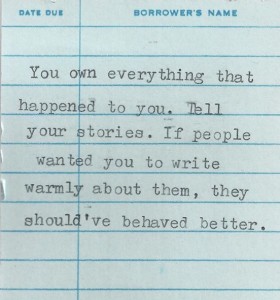
Anne Lamott says it best!
The bully can’t win.
We all work too hard to be taken advantage of by the wolf.
And funny, once I started being honest with people about my experience, others were quick to say, “you know, I always thought something wasn’t quite right there.” But my silence had enabled her to prey on others. We must have the courage to speak up: the truth will set us free.
Honesty can be hard. While I have chosen not publish her name here, she knows who she is, and she knows that I am prepared to be candid about my experiences with her when asked. I now realize that she is plagued by a ‘noncorrectable disfigurement of character,’1 a disability that she cannot change, and one that I pity: it must be crushingly lonely to have no empathy. But I won’t knowingly participate in her seduction of her next “mark.” Wolves are fascinating creatures when you accept them for what they are and control your exposure to them so they don’t injure you.
The point isn’t her identity specifically … the point is that 4% of the population are sociopaths. Armed with a little knowledge, you can avoid being manipulated for someone else’s personal gain. Throughout this post, I have quoted liberally (1) from “The Sociopath Next Door” by Martha Stout, Ph.D – a book I strongly recommend as a resource if this is a topic that interests you. (That’s not an affiliate link, I don’t have any vested interest here.)
But I’ll end this scary tale with the good news: as Dr. Stout reminds us, this means that 96% of the population are not sociopaths.
Tomorrow, when 96% of us take off our masks, keep an eye out for the deceptive wolf who is still wearing sheep’s clothing, the sociopath who can pull the wool over the eyes of even the most vigilant among us. And then choose another path through the woods.
photocredit: ‘Gimrie’ via Morguefile
